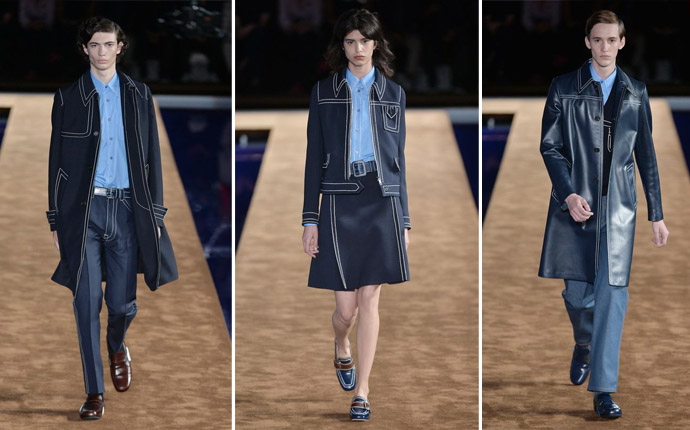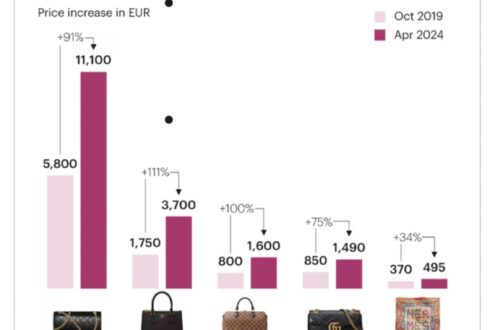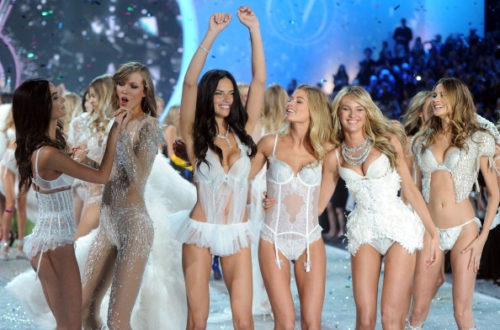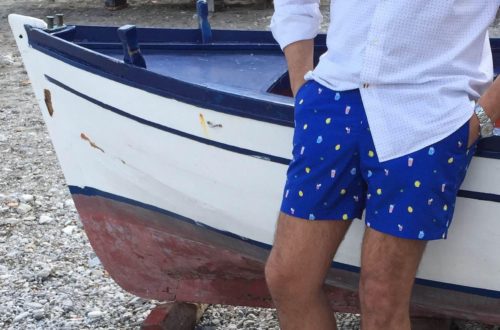Google “Recession 2015”, and one is bo
mbarded with headlines about the economy going from bad to worse.
Falling oil prices, the devaluing rouble, whispers about a Chinese credit crisis, and the possibility that Germany will fall into recession along with the rest of the Europe, paint a bleak new year. Consumer confidence is in its all time low and people are spending lesser.
In the midst of this a new wave of trends emerged:
1. Style a la recession

Prada’s S/S Uomo 2015
Drab dresses, sloppier silhouettes and conservative colours dominated the runways. Minimalist is the key. Excess is out, austerity is in. The rise of the “recession chic” style came as a response of consumers cutting corners: they want to shop, but only on a select few that they can mix and match.
2. Share and swap wardrobes
People may not be shopping as much but they are certainly sharing and swapping. Meetups to exchange wardrobes saw a spike during the recession. Sites like Snobswap, which allows registered users to buy, sell and even swap designer apparel and accessories became vogue. What was once a favorite activity amongst fashionistas who champion sustainability is turning mainstream.
3. Just Do-it-yourself
No time has been a riper time for DIY. Though DIY has been around for ages, the recession made it popular. Consumers — disillusioned by the image of the “evil conglomerate”, and the culture of conspicuous consumption — prefer to take things with their own hands. With the advent of 3D printers, communal spaces and DIY blogs, DIY has never been cheaper, convenience and easier. Not to mention, the personal satisfaction from making your own t-shirt? Priceless.
4. Hard luxury
On the flip side, the 1% (or High Net Worth Individuals) are spending more on hard luxury products such as expensive timepieces. Do not get me wrong, they do cut corners: luxury hotels are taking the hit and some brands have saw sales plummet from their double digit growth. Except, the rich are putting the money on haute joaillerie and expensive mechanical timepieces, which they believe to be alternative investment products. Indeed, these goods tend to retain value better than volatile bonds and stock options.
5. The experience economy
No value speaks louder than an experiential one. After all, why should people buy from department stores when they could save petrol, precious time, and money purchasing the same handbag (or manbag) online? This spurred famous department stores such as Selfridges, Saks Fifth Avenue and Galeries Lafayette to focus on creating experiences for the customer.
 Window Display at Galeries Lafayette, Paris (Credit:http://thebwd.com/)
Window Display at Galeries Lafayette, Paris (Credit:http://thebwd.com/)
For instance, renowned French retailer Le Bon Marche has a rewards card that allow users to gain points, which can be converted into cash for future purchases. A reward programme similar to this helps create value from the consumers perspective. Personalized shopping is another experience that consumers can get from retailers. American retailers Saks Fifth Avenue and Nordstroms are particularly good at this. The aforementioned retailers also offer a similar experience online. And, of course, what can be more exciting than watching the window displays outside Harrods, one of London’s most famous department store?
In tough times, experience is the new black. At least, for the consumer, experiences makes it worth the extra petrol, time and money.





